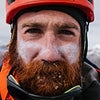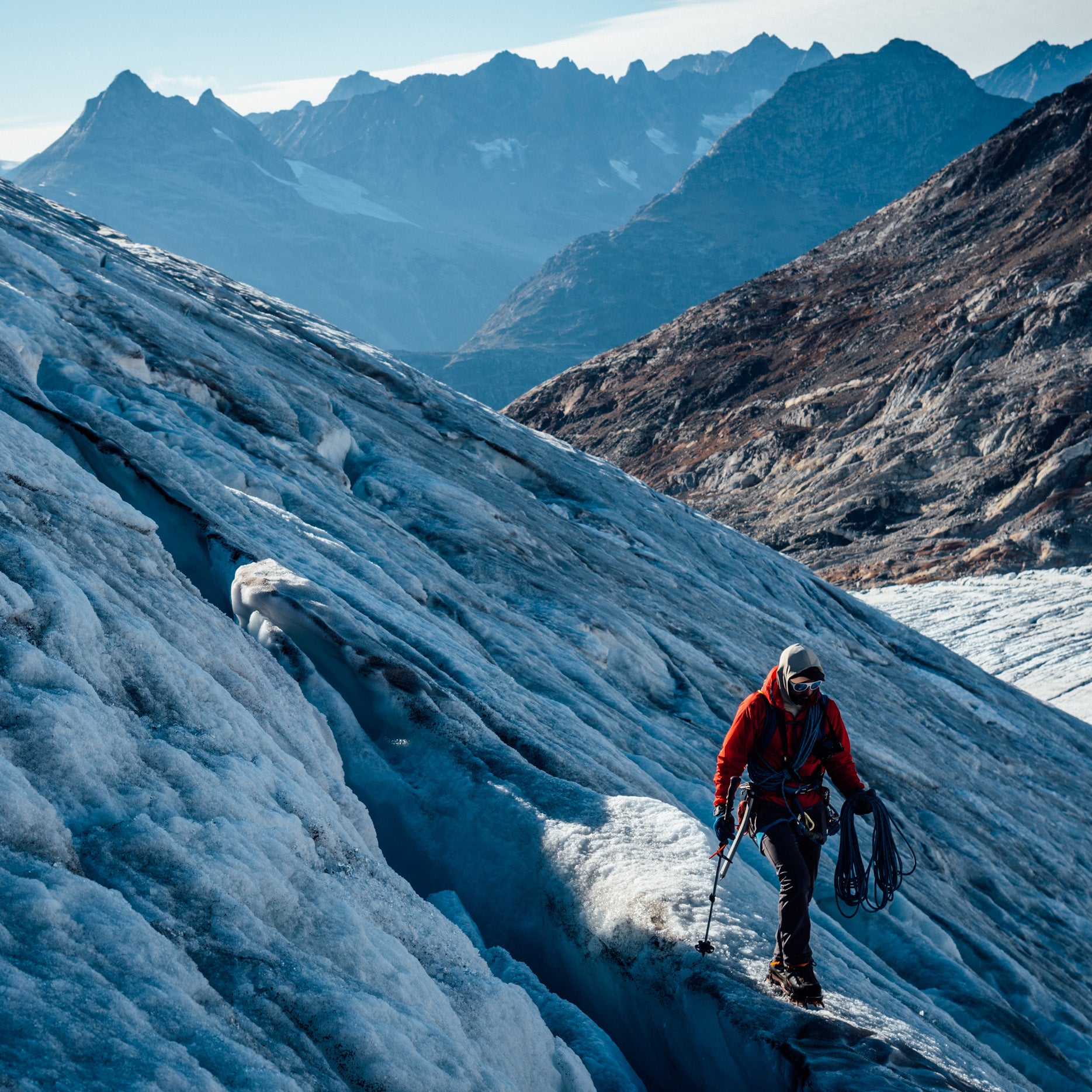There are mountains in Greenland for which virtually no climbing information or data exists. This black hole led my friend Andrew and I to believe there may be previously unclimbed alpine rock routes there. So we packed up a couple sea kayaks and flew there to find them.
Here’s how you can do the same thing.
While many of Greenland’s mountains have been extensively explored over the past few decades, most of that exploration has been centered around Cape Farewell and the Tasermiut Fjord in the nation’s south (an area known for its big granite walls) and the Watkins Range in the north (where 12,000-foot peaks tower above a sea of ice). The country’s central eastern mountains are essentially untouched.
There, a vast network of fjords cuts through rugged coastal peaks. No trails or roads run through the area; getting around needs to be done on the water. We sought unique climbing objectives on our own, so we figured we’d take a unique approach to exploring the area: in sea kayaks. The area’s indigenous people, the Tunumiit, have been using sea kayaks for thousands of years. The sheltered coastal waters are easily navigable in small craft, and silent travel doesn’t disturb the area’s abundant wildlife. Paddling would allow us the freedom to explore the area unassisted and easily pull out of the water when we wanted to climb.
and I decided to fly into and paddle south into the Ammassalik Fjord loaded down with enough climbing and camping gear for two or more weeks. We’d just paddle until we found climbable rock.
About 50 miles in, surrounded by 5,000-foot peaks, we found a series of steep granite cliffs with a glacial approach. It was exactly what we’d been hoping for. We beached our kayaks, set up base camp, and spent an entire week exploring the area. We were the only people there and possibly the first people to climb some of these routes. At least, we saw no one else during the trip, so who’s to say someone hadn’t been there before us?
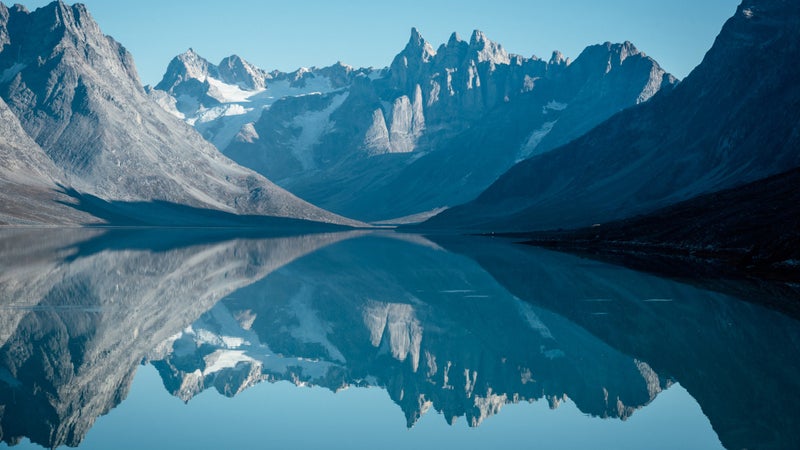
Getting There
Eastern Greenland is incredibly remote, with no straightforward way to get there. The region’s only airport is in a tiny village called Kulusuk and features a gravel runway constructed by the U.S. military during World War II.
You fly into Kulusuk via Iceland. Round-trip flights from Reykjavik—the city’s local airport, not Keflavik International—run about $900 per person. That price includes 44 pounds of luggage; each additional pound costs $5. This will be your trip’s largest expense.
The next biggest cost will be getting to Iceland. Fortunately, that’s gotten cheaper over the past year, thanks to the launch of . Round-trip fares from Los Angeles during peak summer months can now be found for less than $500. Since New York is closer, it’s a little cheaper to fly from there. Those fares don’t include luggage, the cost of which can add up quickly.
Kulusuk (population 240) isn’t much more than that runway and a small shop. You’ll want to use Tasiilaq as the jumping-off point for any adventures. There, you’ll find places to stay and purchase food, fuel, and other supplies. Air Greenland operates a that takes just 15 minutes and runs about $300.
All total, we each spent about $2,000 to get ourselves and our gear to Tasilaaq and back home.
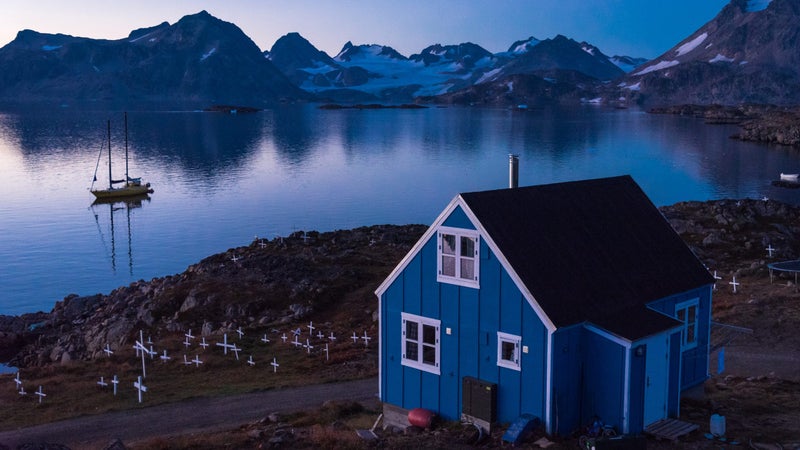
Red Tape
Want to climb in a popular area during peak season in the United States? You’ll need to plan way ahead to get an overnight permit or even enter a lottery. Want to climb in Nepal? You won’t get a permit without hiring a local guide. Want to climb a mountain in eastern Greenland, in the region around Tasiilaq? Just go climb it.
As a U.S. citizen, you don’t need a visa to visit the country as long as your trip lasts fewer than 90 days. It might be difficult to get here, but the hassles end once you’re off the plane.
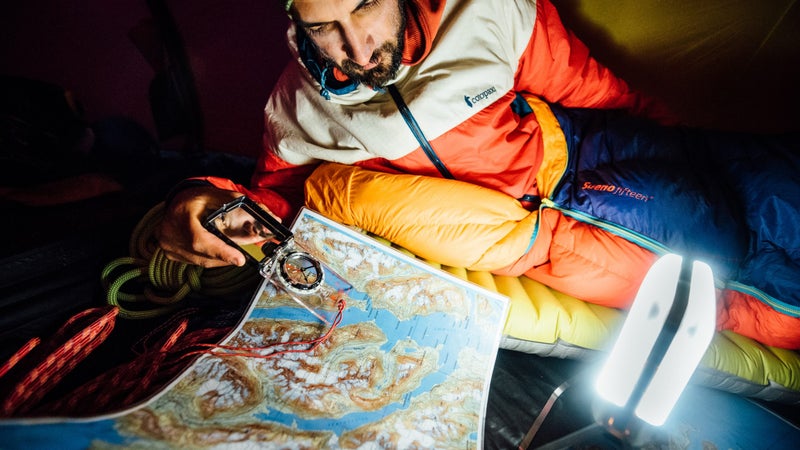
Where to Stay
There isn’t a ton of lodging in eastern Greenland, but what exists is well suited to the traveling adventurer. In Tasiilaq, stay at either (around $75 per night for a private room with an en-suite bath) or (about $120). If you’re in a larger group, rent a house from Arctic Dream.
Tasiilaq is home to a handful of restaurants, including the buffet at Hotel Angmagssalik, plus a grocery store and supermarket. You can also buy fresh fish from locals—it’s delicious and inexpensive.
operates its own hostel; a bed in the dorm room runs $45 per night. The company also rents outdoor equipment and is a great resource for information.
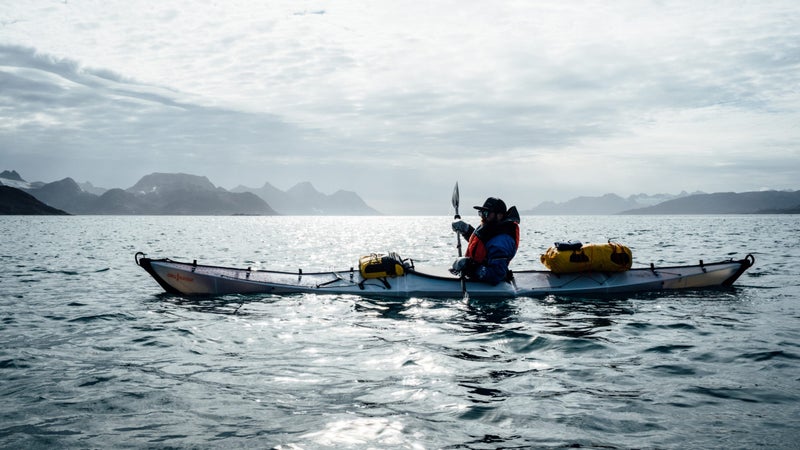
Getting Around
You get around eastern Greenland on the water. There are motorboat tours and rentals, but they’re relatively expensive and don’t offer you the freedom of a kayak.
Kayak rentals are available from local outfitter . A single kayak runs about $300 for a week; a tandem is a little over $400. If you plan to spend a week or less in the area, renting makes the most financial sense. Because we were there for longer, it actually worked out cheaper for us to bring our own boats.
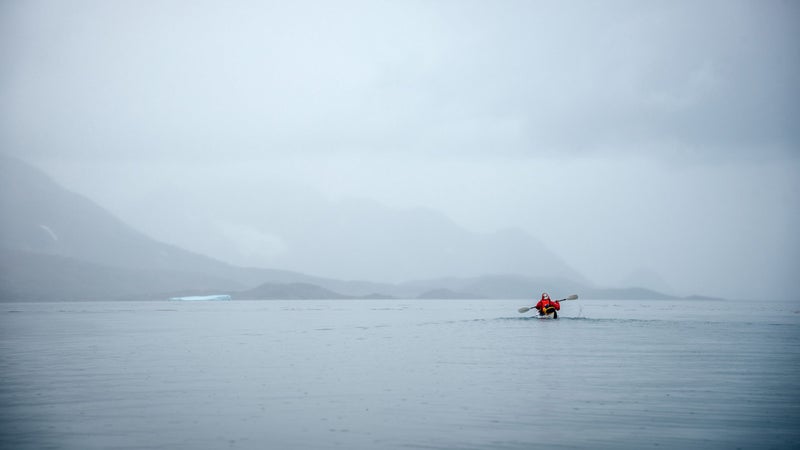
The Boat
How does one carry a kayak halfway around the world into a remote fishing village? With a kayak that folds up into a box and can be carried like a backpack, of course. The shape was inspired by traditional Arctic models, like those used by native Greenlanders. The 16-foot boat weighs 35 pounds and is rugged enough not just for ocean paddling, but also for surviving the cargo holds and baggage conveyers of commercial flights.
Total weight capacity for the Coast is 400 pounds, including the paddler. We were well within that limit even loaded with more than 100 pounds of gear each.
Compared with the tiny deck hatches and small storage areas of a molded kayak, the folding Oru models are ideal for loading and hauling large amounts of stuff. A central seam runs the length of the fore and aft decks: you just pile your drybags onto the flat hull and assemble the boat around them.
The streamlined hull makes the Oru kayaks nimble and quick in calm water, but they can be challenging to paddle in rough seas or through strong currents due to their lack of a rudder. We experienced everything from glass-like water conditions to overhead swells during this 100-mile paddle and were glad we put in the effort to bring our own boats with us.
Worried about durability? A rare attempted to take a bite out of Andrew’s boat one day. After fighting it off with a paddle, he pulled ashore to check for damage to the hull but found it unscathed.
Paddling just a few miles south of the Arctic Circle, passing glaciers and icebergs, you’ll want a drysuit to protect you from the frigid water. A suit that can protect you from both daily and extreme conditions is vital here, where help could be days away, if it exists at all. Go with an expedition drysuit like those from and , which are tough enough to take the abuse of an extended trip and feature all sorts of convenient features, like pockets and pee zippers.
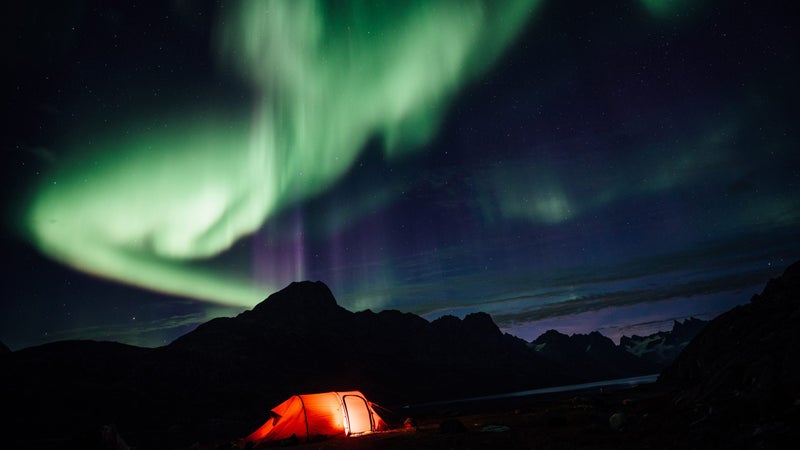
Camping
Temperatures in the area are moderate during the summer. We experienced daytime highs of about 45 degrees Fahrenheit and nighttime lows around freezing. But there are no trees, and winds roar off the island’s glacial interior. To make sleeping in high winds comfortable, we brought the four-season Hilleberg Namatj 3GT, which provided ample interior space and a large vestibule for cooking out of the wind. You’ll want a proper double-wall tent, both to manage moisture and give you some respite from the bugs.
You can’t fly with canister fuel, and you won’t find any in Kulusuk or Tasiilaq. We brought the , which can run on virtually any fuel source. We found that benzene (basically furniture polish) was the easiest fuel to obtain.
Freshwater sources from glacial melt are abundant, but flat places to camp anywhere near them are rare. Give yourself plenty of time to search for the right campsite.
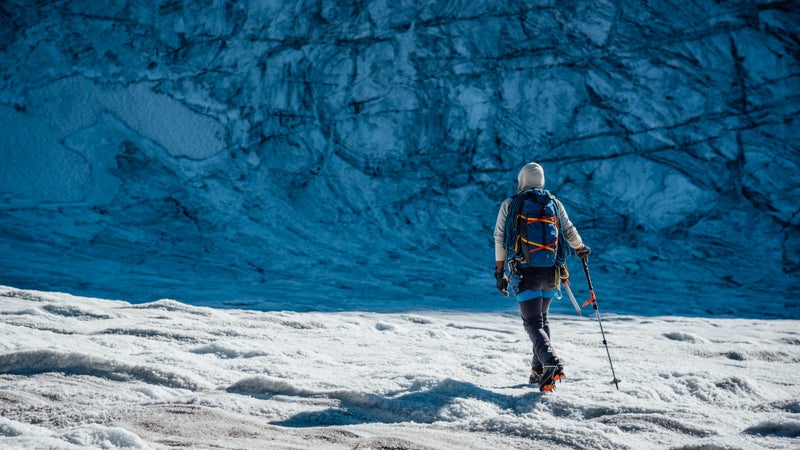
Polar Bear Defense
While it’s unlikely that you will encounter a polar bear, they do call the area home. It’s imperative that you prepare to deal with them. We were able to rent a somewhat rusty but still functioning 12-gauge shotgun from a local. You can’t fly with bear spray, and .
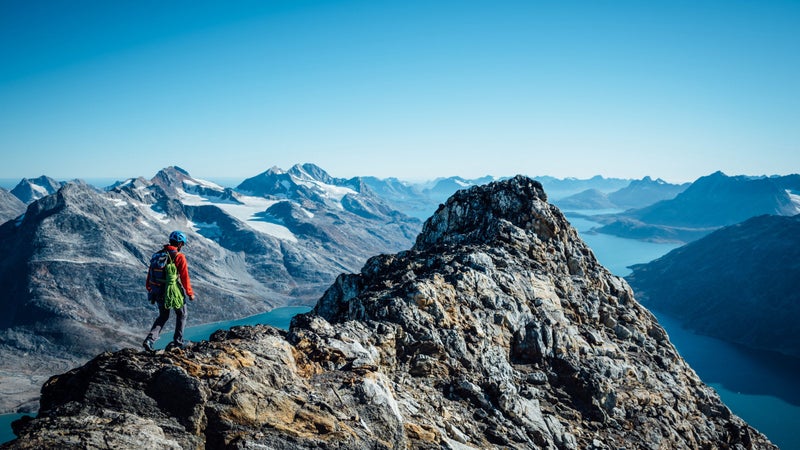
Finding and Exploring Mountains
You won’t find a guidebook for eastern Greenland. You won’t find a list of peaks or their routes. In fact, you’ll have trouble finding a map anywhere but locally.
Because it’s impossible to know what kind of conditions you’ll be climbing in ahead of time, you’ll need to pack versatile mountaineering gear. And because you need to travel and paddle with it, you’ll also want to minimize weight.
Despite the warming climate, glaciers are absolutely everywhere here. Prepare to travel across glaciers, scale granite walls, and scramble up peaks. The amount of traditional alpine climbing is limited, but the mountaineering potential is limitless.
There was little snow thanks to the mild summertime temperatures. A lightweight, single-layer mountaineering boot was adequate. You can also get away with a lightweight, packable crampon like the .
Our biggest concern was ropes. Out here, you can’t take safety—or the capabilities of your gear—too seriously. A set of ultradurable () gave us the ability to make longer rappels, reduced drag on wandering routes, and provided an excellent balance between lightness and strength. The sheaths are designed to resist abrasion and sharp edges.
Seek out new mountains on Google Earth, then go climb them. Who knows—you might even be the first person to do so.

